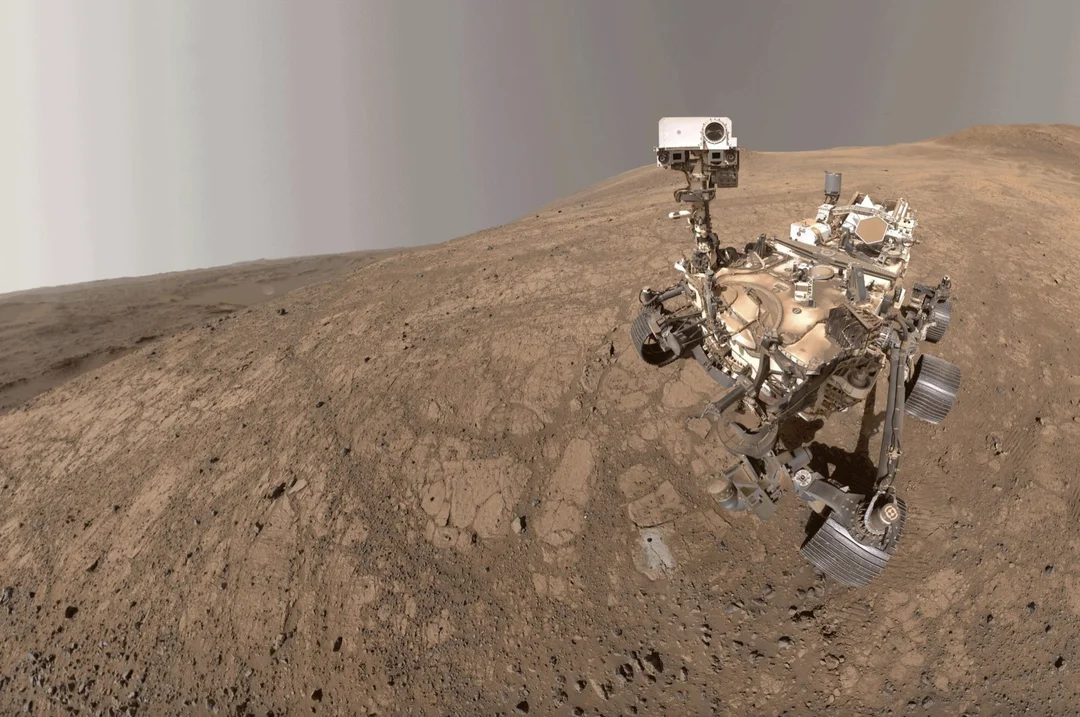
Martian Mysteries: Perseverance Rover Spots Dust Devil and Skull-Shaped Rock, Baffling NASA Scientists
NASA's Perseverance rover, currently exploring the Red Planet, has captured images that are both stunning and perplexing. From swirling dust devils to a strangely shaped rock, Mars continues to surprise scientists and fuel our curiosity about the distant world.
Recently, the rover snapped a selfie while perched on Witch Hazel Hill in Jezero Crater. The image, released on Wednesday, marks Perseverance's 1,500th sol (Martian day) on Mars, equivalent to 1,541 Earth days. But what makes this selfie truly special is the unexpected photobomber: a Martian dust devil, captured swirling a full 3 miles (5 kilometers) behind the rover.

"Having the dust devil in the background makes it a classic," said Megan Wu, an imaging scientist from Malin Space Science Systems, which built the camera responsible for the stunning shot. The picture also highlights the rover's latest sample borehole on the surface, a testament to its ongoing mission to collect data and samples for potential future return to Earth.
Justin Maki, Perseverance imaging lead at NASA’s Jet Propulsion Laboratory, noted that the clear atmosphere allowed them to capture the dust devil in Neretva Vallis, adding depth to the already impressive self-portrait, showcasing both the rover and the Martian landscape.
However, the wonders don't stop there. Another recent discovery has left NASA scientists scratching their heads: a skull-shaped rock found on the lower slope of Witch Hazel Hill. Described as a "floating rock" by some, its unusual shape and misplaced location have sparked considerable intrigue. The rock, photographed on April 11, 2025, using the Mastcam-Z camera, appears to have been transported to its current position, though the mechanism remains a mystery.
"After 1,500 sols, we may be a bit dusty, but our beauty is more than skin deep," said Art Thompson, Perseverance project manager at JPL, highlighting the rover's enduring capabilities. The rover has abraded and analyzed 37 rocks, collected 26 rock cores, and traveled over 22 miles (36 kilometers), proving that its mission on Mars is far from over.
These discoveries remind us of the dynamic nature of Mars and the ongoing quest to unravel its secrets. The dust devil symbolizes Martian atmospheric activity, while the skull-shaped rock presents a geological puzzle. The images offer valuable insights into Martian geological processes and potentially hint at past environmental conditions. Such finds highlight that Mars may hold clues for understanding planetary evolution.
What do you think about these Martian discoveries? What other surprises might Perseverance uncover as it continues its journey across the Red Planet? Share your thoughts and theories in the comments below!